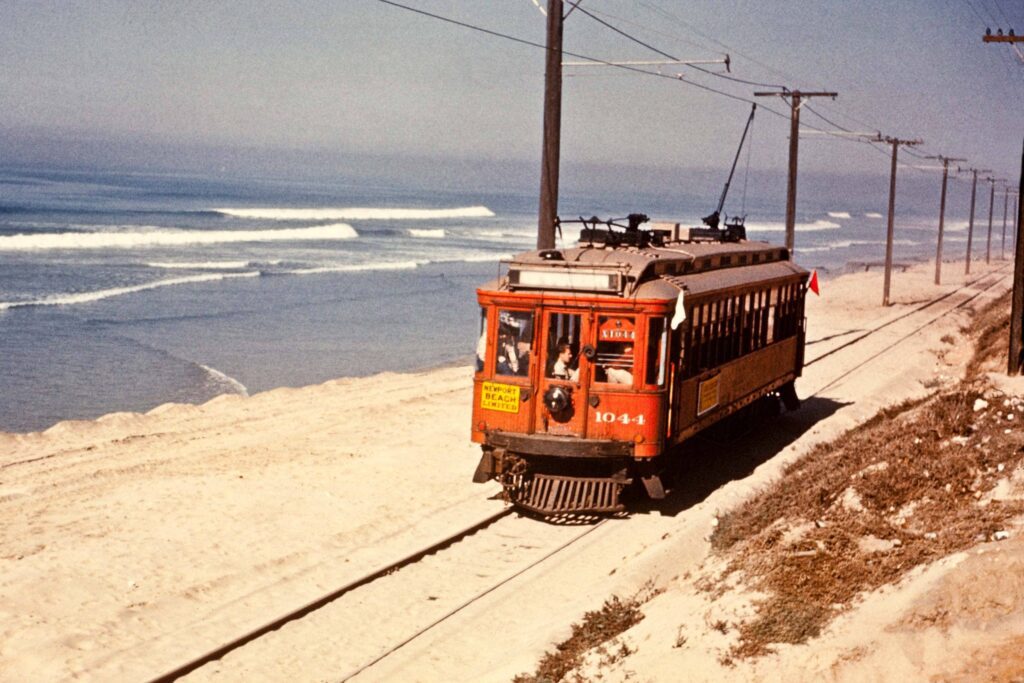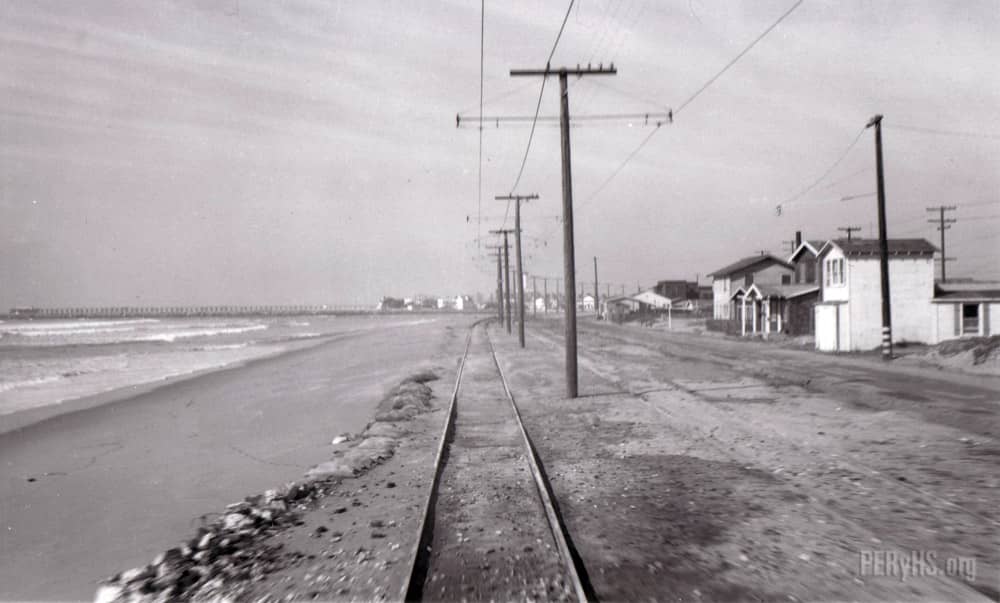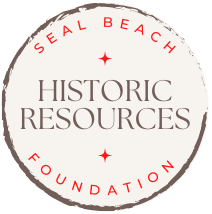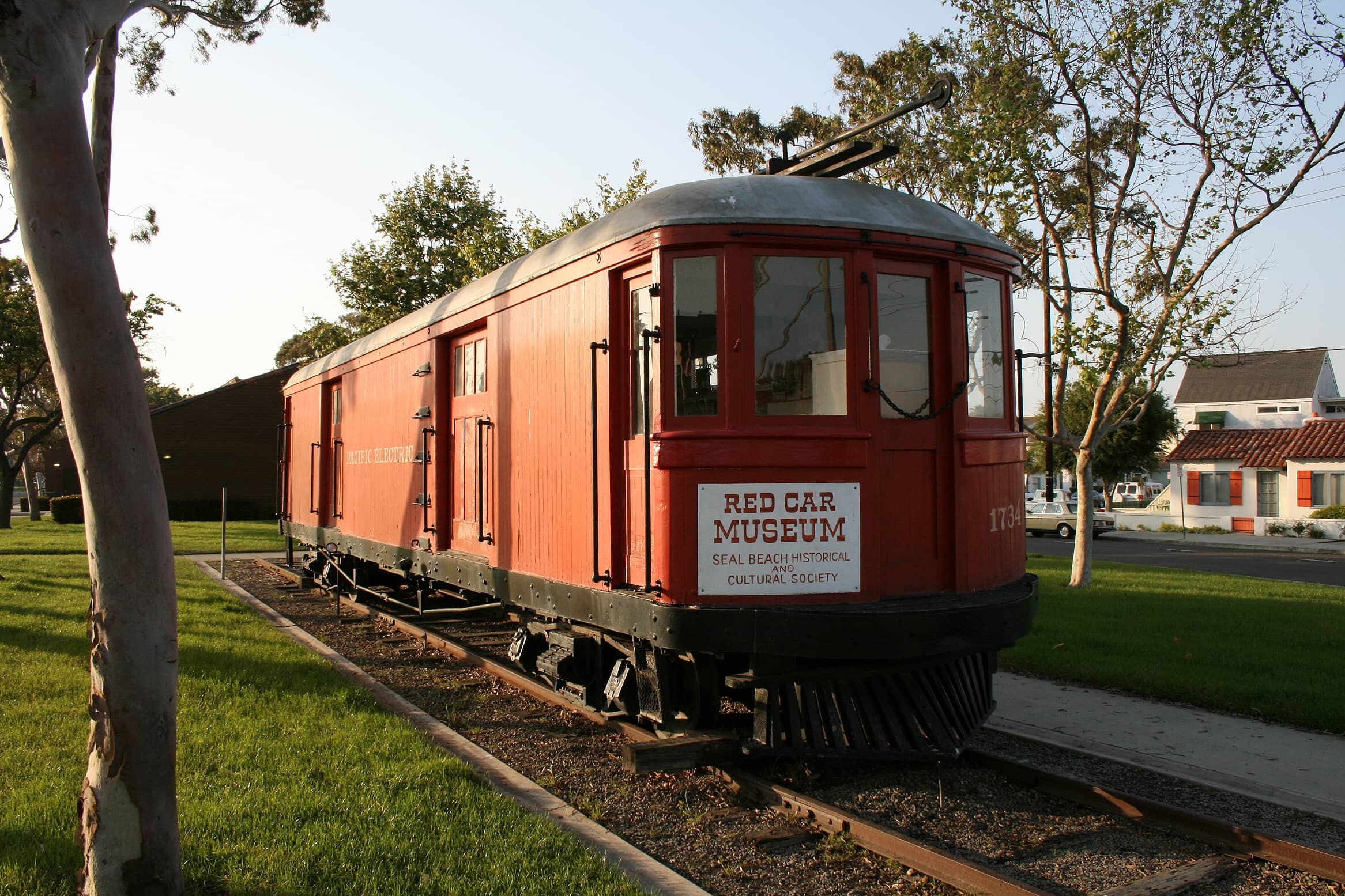The Pacific Electric Railway was the largest interurban railway system in the United States. Although started by Isais W. Hellman and Henry Huntington in 1901, the truth is it was controlled for all intents and purposes by the Southern Pacific Railroad after mid-1903.
Hellman is probably most familiar in our area as the original owner of the Hellman Ranch, but from 1870-1920 he was also the pre-eminent financial leader west of the Mississippi. He emigrated from Bavaria in 1859 and became very successful in Los Angeles first as a merchant, then as the founder and long-time President of the Farmers & Merchants Bank of LA. He also invested heavily in Southern California real estate as well as many early trolley lines in Los Angeles. Among his real estate investments were significant parcels between downtown LA and Long Beach and as an investor in John W. Bixby’s 1881 purchase of the 26,000 acre Rancho Los Alamitos. The other investor (also a 1/3 interest) were John’s cousins, Lewellyn and Jotham Bixby, owners of the equally large Rancho Los Cerritos. After John suddenly died in 1887 the ranch was divided into four parts. Together the owners would own and operate the township of Alamitos Beach. The remainder was portioned equally among the three parties and Hellman got the Orange County land basically south of the present 405 freeway. The Hellman Ranch included what is now Leisure World, the Navy Weapons Station, Heron Pointe, and The Hill, as well as a chunk of northwestern Westminster.

In the 1890s Hellman moved to San Francisco to assume control of what would become the Wells Fargo Bank. He soon met Huntington, then a Vice-President of operations for the Southern Pacific, when they partnered on consolidating and improving the many competing trolley lines in San Francisco. Hellman raised the money and Huntington oversaw the conversions of multiple roads and gauges under the standards of the SP’ s Market Street Railway system.
Hellman came to appreciate the younger man’s skills as a railroad manager, and soon suggested to Henry they form a new company to do in LA what they had just done in San Francisco — purchase, acquire and consolidate the many LA trolley lines and convert them to a single standard.
They formed the Los Angeles Railway Company in 1898 with Huntington family members (Collis, Henry and Henry’s son, Howard) owning 55% of the stock and the Hellman syndicate owning 45%. But Hellman, still a Director on many of the Los Angeles trolley lines, was the original guiding force. They quickly acquired controlling interest in five of LA’s six main trolley companies. At first LA newspapers thought it was an SP operation and were not favorable to it, but Hellman’s reputation made others take another look.
When Collis Huntington died in August 1900, it was assumed Henry would inherit control of the SP, but Eastern interests (the Vanderbilts, and some Wall Street banks) backed the Union Pacific’s E.H. Harriman and he took control of the SP in October 1900. To the press Henry was calm and accepting, but inside he was seething and he turned his focus to his Los Angeles operations.
The progress, acquisitions and success of the renewed downtown LA railways by the Huntington-Hellman syndicate, as it was usually called, drew great attention of newspapers, politicians and speculating businessmen. In 1901, Hellman wrote Huntington that it was now time to expand their system to connect all of the population centers of Los Angeles, Orange, San Bernardino and Riverside Counties. Hellman, who knew the area well, had already assigned engineer Epes Randolph to lay out the new system of lines which would be called the Pacific Electric Railway. $10 million dollars was raised for this new effort, with Hellman’s syndicate providing 70% of the money.
It is no coincidence that the first two major lines to be constructed, to Pasadena and Long Beach, went through large parcels of property that Hellman owned outright or controlled. Nor is it a coincidence that the first major branch line to be constructed – the Long Beach to Newport line – went directly through two properties that Hellman also controlled– the Alamitos Land Company and the 6,500 acre Hellman Ranch division of the former Rancho Los Alamitos.
The first PE lines were a tremendous success, but Huntington quickly went through the first $10 million dollars of funds as well as significant profits to expand the lines ever further – some through new construction, others through purchase,. All were in direct competition with the Southern Pacific. This not only caught the attention of SP President E.H. Harriman who had no intention of losing further business to Huntington’s line, but irritated Hellman’s syndicate who preferred profit dividends to revenge. Hellman also had other concerns as his San Francisco bank still had many dealings with the Southern Pacific. Hellman couldn’t help but notice that the SP was competing with Huntington on every new SoCal line, driving acquisition prices through the roof. The Hellman group decided to sell enough of their stock to Harriman to give him a 40% ownership in the Pacific Electric, share which now matched Huntington’s 40% share. Hellman retained 20% and he more often than not sided with Harriman. So from Summer of 1903 until he sold out in 1911, Huntington ran the PE but Harriman and the SP retained a veto capability. But recognizing Huntington’s abilities, they used this very sparingly.
With Harriman’s and Hellman’s blessing, another $10 million was raised to form the Los Angeles Inter-Urban (LAIU) which Huntington used to basically complete the original plans of the Pacific Electric. One of those plans was the branch line to run from the North Long Beach junction at Willow Avenue, through East Long, Bay City and ending at Newport Beach.
Initial planning and land acquisition had already been started by the PE in 1903, but had stalled as PE funds dwindled, and ownership issues were resolved. But in February 1904, the work was transferred to the LAIU, whose crews finished surveying and began the grading, laying rails and raising poles for power lines for trolley service for the new branch line. Commencing at the North Long Beach Junction (near the current Blue Line station at Willow and Long Beach Boulevard), the line ran just south of Signal Hill to the base of the Colorado Lagoon. Here the Rails bent a degree or so south and determined the future boundaries of Marine Stadium, Appian Way and the north boundary of Naples and continued straight across the marshlands of Alamitos Bay to the right of way on a newly established speculative real estate subdivision called Bay City. It emerged from the marshlands and crossed an arm of Alamitos Bay at 5th Avenue where the company built a covered bench to act as a station. It then continued to Anaheim Landing, crossed the narrow inlet and this time veered slightly north to follow the beach the final 15 miles to Newport Beach.
Newspapers religiously covered the progress of the new line, about a quarter mile a day. Most of the crews were Mexican immigrants who lived in tent camps that followed the progress of the tracks. The line reached the Bay City limits on May 24,1904 and Anaheim Landing the following day. It continued to Huntington Beach and officially transported its first paying customers to Newport Beach on _________
Unlike many of the other lines, the Newport line was entirely on private way except in Los Angeles and Newport Beach. The wide open spaces in between saw little traffic congestion and allowed an average speed of 30mph, making it the second-fastest on the entire PE system.
But the wide open spaces also meant little population for passengers. However the line did make profits in freight and the expansion of electrical power and real estate.
In truth, passenger traffic revenue rarely generated a profit, unlike freight. But Henry Huntington’s urban rail involvement was so connected with his hugely successful real estate development, that many lines on the Pacific Electric’s rail system had ultimately been run at a loss. But by 1920, when most of their real estate holdings had been developed, the major income source began to dry-up, and Huntington was now long out of the picture.

There is an enduring theory that automobile manufacturers (in particular General Motors) conspired to put street railways out of business, but the truth is far less dramatic. By the 1930s, Southern California streetcars had become quite unprofitable and were quickly losing riders. The company managed to turn a profit in only one year between 1913 and the beginning of World War II.[1] Although ridership spiked during the war years because of government gas rationing and restrictions on car manufacturing, but the streetcars emptied out again in peacetime.
Continuous Improvements of roads and highways meant more and more of the PE’s inner-city tracks now had to share streets with automobiles and trucks, often slowing rail traffic to a crawl. As traffic congestion increased, the speed and efficiency of the streetcars declined and inevitably, passenger lines were abandoned and replaced by bus routes.
Between 1945 and 1951, the number of riders carried each year fell by nearly 80 million. Not only that but the Interstate Highway System of the 1950s was looming on the horizon.
Despite the alarms of the automaker-anti-monopolists, the dismantling of the streetcar system was inevitable.
[1] Transport of Delight, Jonathan Richmond

